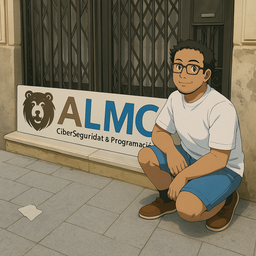Cookiecutter MCP UV Container
A cookiecutter template for quickly creating MCP (Model Context Protocol) servers with Apple container support.
Why Apple Containers?
Apple containers provide VM-level isolation with Docker-like simplicity:
- Superior Security: Each container runs in its own lightweight VM
- macOS Native: Deep integration with macOS frameworks
- On-Demand: Start/stop servers as needed (not constantly running)
- Resource Efficient: Less overhead than traditional VMs
- OCI Compatible: Works with existing container registries
Features
- 🚀 FastMCP server setup with example tools
- 🐳 Multi-stage Dockerfile for optimized containers
- 📦 UV package management
- 🔒 VM-level isolation with non-root container user
- 🌐 Multiple transport methods (stdio, streamable-http, sse)
- 🍎 Optimized for Apple Silicon
- 📝 Example calculator tools with typed parameters
Usage
Prerequisites
Install UV (if not already installed):
curl -LsSf https://astral.sh/uv/install.sh | shInstall cookiecutter:
uv tool install cookiecutter # or pip install cookiecutterInstall Apple/Container:
Create a new project
# From local directory
cookiecutter /path/to/cookiecutter-mcp-uv-container
# From GitHub
cookiecutter https://github.com/daviddrummond95/cookiecutter-mcp-uv-container
Template Variables
You'll be prompted for:
- project_name: Human-readable project name (e.g., "My Calculator MCP")
- project_slug: Package name (auto-generated from project_name)
- mcp_name: The MCP server name (e.g., "MyCalculatorMCP")
- description: Project description
- author_name: Your name
- author_email: Your email
- python_version: Python version (default: 3.13)
- mcp_version: MCP SDK version (default: 1.9.4)
Project Structure
After generation, your project will have:
my-mcp-server/
├── Dockerfile # Multi-stage build for containers
├── pyproject.toml # UV project configuration
├── hello.py # MCP server implementation
├── QUICKSTART.md # Quick start guide
└── .env.example # Environment configuration
Next Steps
After creating your project:
Navigate to your project:
cd my-mcp-server # or whatever you put as project-slugStart Container System (first time only):
container system startBuild Container:
container build --tag my-mcp . # Replace my-mcp with whatever you want to name the containerRun MCP Server:
# Interactive stdio mode container run --interactive my-mcpCustomize: Edit
hello.pyto add your own MCP tools
Claude Desktop Integration
For Claude Desktop, you have two options:
Option 1: Run locally without container (recommended for development)
{
"mcpServers": {
"My MCP Server (Local)": {
"command": "uv",
"args": ["run", "fastmcp", "/path/to/my-mcp-server/hello.py"]
}
}
}
Option 2: Use HTTP transport with container
Then configure Claude Desktop to connect via STDIO:
{
"mcpServers": {
"My MCP Server (Container)": {
"command": "container",
"args": ["run", "--interactive", "my-mcp-container"]
}
}
}
Transport Options
The template supports multiple transport methods via environment variables:
- stdio: Default
- More in progress for flow from local-> cloud
Set via: MCP_TRANSPORT=<transport-type>
License
MIT




